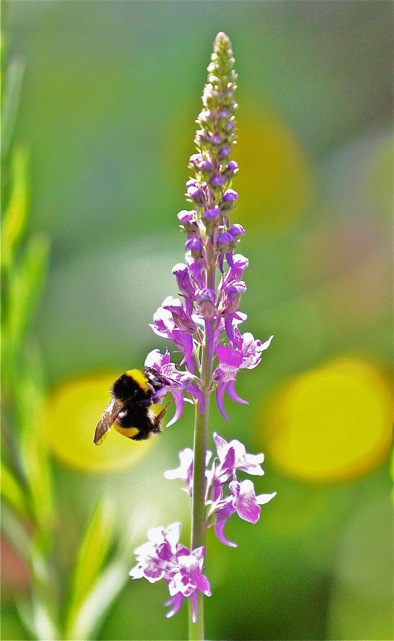A buzz in the air
Well, it’s coming up to that time of year again where the spring has arrived, the flowers are blooming and soon the bees will be out by the hundreds. With their characteristic buzz and seemingly bumbling flight they tend to muster up nostalgic feelings of hot summer days gone by. However, they’re not just pretty to look at as they do in fact provide services that we simply could not do without, and I’m not talking about the honey you bought from the farm shop last week. In the UK we not only rely on bees to pollinate our wild flowers and garden plants but also the crops we produce and without these insects sustained populations of many plants wouldn’t be possible. But, at the end of rationing in 1954 farming methods intensified and British bees have been declining ever since. In recent years however, the public and scientific communities have been rallying to the cause and improvements are starting to be seen.
This is where you come in to the picture. By managing your garden in certain ways you can create a haven for not just bees but other pollinators like butterflies, moths and beetles. Firstly, and perhaps most importantly, try to avoid using pesticides or weed killers in your garden when plants are in flower. What seems like a little to you is a lot to a bee. Next, try and introduce some flowers that attract bees like purple flowers full of nectar, such as buddleia or foxgloves. Many garden centres will also sell a wildflower seed mix that is perfect for pulling in a diverse range of pollinators. Another way that you can help is by providing the bees with a nesting site. Any garden centre will sell pre built bee boxes but it’s much more fun and rewarding to make your own and can be easily done with materials you find around the house. A quick search on Google will bring up hundreds of different DIY bee nest boxes for different species, so take a few minutes and do a bit of research first.

Now it’s all well and good having a garden full of bees but what makes it more enjoyable is when you manage to successfully identify your first bee species. In the UK we have around 250 species of bee; the majority are solitary bees that don’t live in colonies. The remainder if composed of 24 species of bumble bee and just a single species of honey bee. This may sound daunting to some but there are excellent resources online to help you along the way to distinguishing between these different species. A good place to start is probably with the more common bumble bees shown on the Bumble Bee Conservation Trusts webpage – http://bumblebeeconservation.org/. This site also has stacks of info about how to get involved in bumble bee conservation in the wider community.
During the summer our Keltneyburn reserve near Aberfeldy plays host to a wide variety of orchids which are fantastic at attracting all sorts of pollinators. So if you’re in the area during the summer why not stop by and have a look.
Will,
Species Protection Officer
Help protect Scotland’s wildlife
Our work to save Scotland’s wildlife is made possible thanks to the generosity of our members and supporters.
Join today from just £3 a month to help protect the species you love.
Preface
Well, it’s coming up to that time of year again where the spring has arrived, the flowers are blooming and soon the bees will be out by the hundreds. With …
